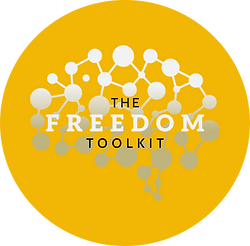The road to absolute freedom part 2
- René Ameling
- Jul 15
- 3 min read
Updated: Aug 14

In the previous article, "The Road to Absolute Freedom," I described the steps to this freedom.
But how do you actually achieve that absolute freedom?
To achieve this, you need both short-term and long-term plans. In the short term, you try to generate (passive) income through, for example, an online business, trading stocks or crypto, dividend payments from stocks and/or bonds, offering your services online through platforms like Fiverr, or through real estate income. And there are many more ways to earn income without being stuck in the 9-to-5 grind.
For the long term (20-50 years, depending on your age), you will invest in stocks, bonds, gold and other forms of investments that yield money.
And that doesn't have to cost a lot of money per month. These days, you can also buy fractional shares—a portion of a stock—through trading sites like Trading 212. These investments can grow along with your income.
Don't forget that a pension won't be so self-evident in the future. I recently saw a newspaper article (July 12, 2025) that the state pension (AOW) is under pressure. And besides, we're living longer and longer. With the advances we're making in medicine and genetic research, we can extend our lives even further. You don't want to be living on a third-floor apartment in your old age without money to enjoy yourself, do you?
But what should I invest in?
But René, I really don't know anything about stocks, so what should I buy? I'll let you in on a little secret: neither do I! Luckily, there's something called the S&P 500 index fund. The company behind it, Vanguard, has compiled 500 stocks from various companies in this index that have averaged an 8% annualized return over the past 30 years. Regardless of a bull or bear market, extreme crashes or extreme positive returns, and inflation or deflation.
But then it's also important to differentiate. That is, to distribute your investment appropriately across stocks, government bonds, gold, and commodities.
There are four factors that influence the value of the above investments:
inflation
deflation
higher economic growth than expected
lower economic growth than expected
Because each component reacts differently to the market, it's important to allocate your investment wisely. For example, if you make a profit on stocks, you might lose money on bonds or gold.
The All Seasons portfolio
Ray Dalio owns the largest hedge fund firm in the world, with a $160 trillion portfolio and a net worth of $14 trillion. Thanks in part to the All Seasons portfolio, he has amassed not only his wealth but also that of many of his clients. Now, I don't have $100 million (the minimum amount required to become his client), but he shared his insights for Tony Robbins' book "Money: Master the Game." The All Seasons portfolio ensures you get a good return regardless of market or economic developments.
The distribution is as follows:
30% in index funds
15% in short-term government bonds
40% in long-term government bonds
7.5% in gold
7.5% in other raw materials such as oil, aluminum, agricultural raw materials
Read Tony Robbins' book if you'd like to learn more about this. And if you're thinking about investing, make sure you get guidance from a trusted financial advisor.
And as always: only invest money you can truly afford to lose. Don't get into debt. The goal of this blog is to create financial freedom. Do your research and make sure you have at least a basic understanding of what you're talking about.
Did you like this article? Do you have any questions? Leave a like or comment below. And share this article with your friends using the social media buttons!



Comments